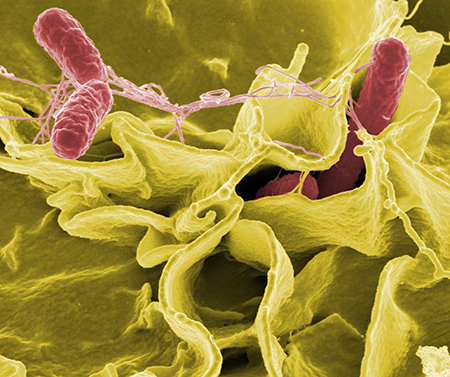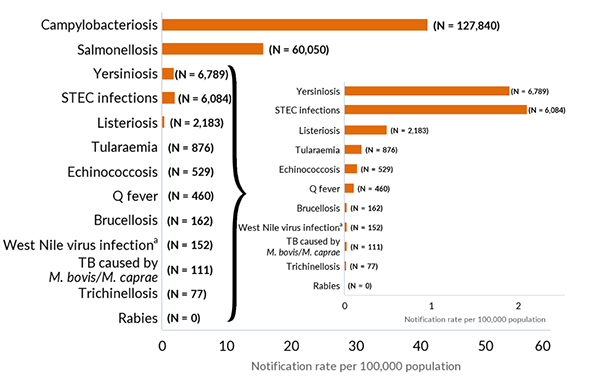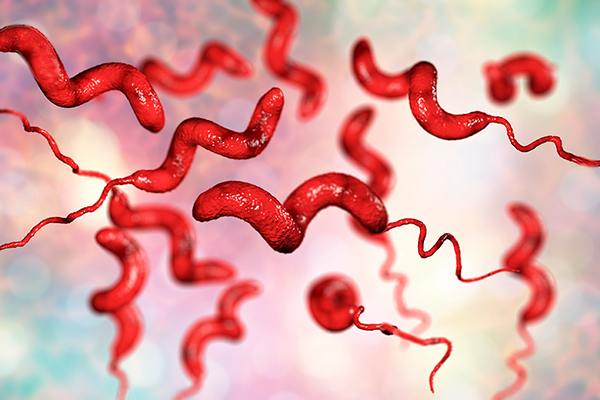
Together We Will Make It Through!
29 April 2020Food hygiene and safety remain paramount in the food industry despite the turbulent times we live in. The food industry sector is trying to save costs to cope with rising raw material and energy prices, while maintaining its margins. Despite all these distractions, hygiene, meaning cleaning and disinfection of facilities, and food safety are of the at most importance if food is to reach our tables with the greatest possible guarantees of safety. This is the only way, other than implementing animal health control policies, to tackle the increase in human illnesses caused by the ingestion of spoiled food.
According to the latest annual report published a few days ago by EFSA (European Food Safety Authority) and ECDC (European Centre for Disease Prevention and Control), which provides detailed data on the occurrence of the main zoonoses reported by EU Member States and other European countries, the year 2021 saw an overall increase in cases of zoonoses and outbreaks of food-borne diseases compared to the previous year. This is possibly related to the COVID-19 control measures implemented in 2020, which were still in place in 2021, and the fact that the UK left the European Union, which means that data from the UK are no longer counted in this report. Thus, in 2021, the 27 EU Member States and Northern Ireland reported 4,005 foodborne outbreaks, which was 29.8% more than in 2020, and 32,543 human cases, an increase of 62.6% over the previous year. These numbers are close to what was reported in the 2017-2019 period before the pandemic, indicating a likely gradual return to pre-COVID-19 food consumption habits in 2021 regarding foodborne pathogen transmission, according to EFSA.
While the report shows outbreak numbers like those recorded before the pandemic, this trend is broken by foodborne listeriosis outbreak cases, which were higher than in 2019, recording their highest level to date. This increase in cases caused by Listeria monocytogenes is probably due, according to the EFSA report, to the use of whole genome sequencing techniques that allow the exact detection and definition of the bacterial species causing the outbreak.
However, an analysis of the outbreaks recorded across Europe during 2021 shows that the most frequent cause of outbreaks was Salmonella, in particular S. Enteritidis, which accounted for 19.3% of the total, with a total of 773 detected outbreaks of salmonellosis caused by the ingestion of eggs and egg products. In addition, outbreaks related to the consumption of products in the category “vegetables and juices and other derived products” increased significantly in 2021 compared to previous years, according to EFSA. These outbreaks were followed by Campylobacter outbreaks, which amounted to 249, and 23 Listeria outbreaks, the latter resulting in the death of 12 people. This figure rises to 208 if we take into account ECDC data that do not come from localised outbreaks.

The two most reported diseases
The report also includes the total number of reported cases of zoonoses, which are not necessarily related to outbreaks. In 2021, the two most reported diseases in humans were campylobacteriosis and salmonellosis, both related to gastrointestinal problems, with a total of 127,840 and 60,050 cases respectively. Campylobacteriosis remains the most frequently reported zoonosis. The number of reported cases increased last year by 7,000 notifications compared to 120,946 in 2020, with chicken and turkey meat being the most common source of this disease. Salmonellosis was the second most reported pathology. These two diseases were followed by yersiniosis with 6,789 cases, which is often associated with the consumption of undercooked pork or vegetables, infections caused by Shiga toxin-producing Escherichia coli with 6,084 cases and listeriosis with 2,183 cases across Europe. Both agents can cause severe and even fatal foodborne illnesses, especially in high-risk population subgroups such as immunocompromised persons, children, pregnant women and the elderly.

Based on the results, proper hygiene of facilities, as well as biosecurity policies in animal husbandry, are paramount to reduce the risk of food-borne infections. In this sense, it is important to note the importance and rigor in the compliance of hygiene control programs, the implementation of specific programs against certain pathogens, e.g. Salmonella in poultry production. In summary, reviewing and updating cleaning and disinfection protocols is necessary to curb the trend that we see reflected in the EFSA annual report.
Written by Joan Estornell


